- FMA
- The Fabricator
- FABTECH
- Canadian Metalworking
5 Tips to Keep Your Power Tools Powerful
A little maintenance will keep hand power tools productive longer
- By Sue Roberts
- July 2, 2016
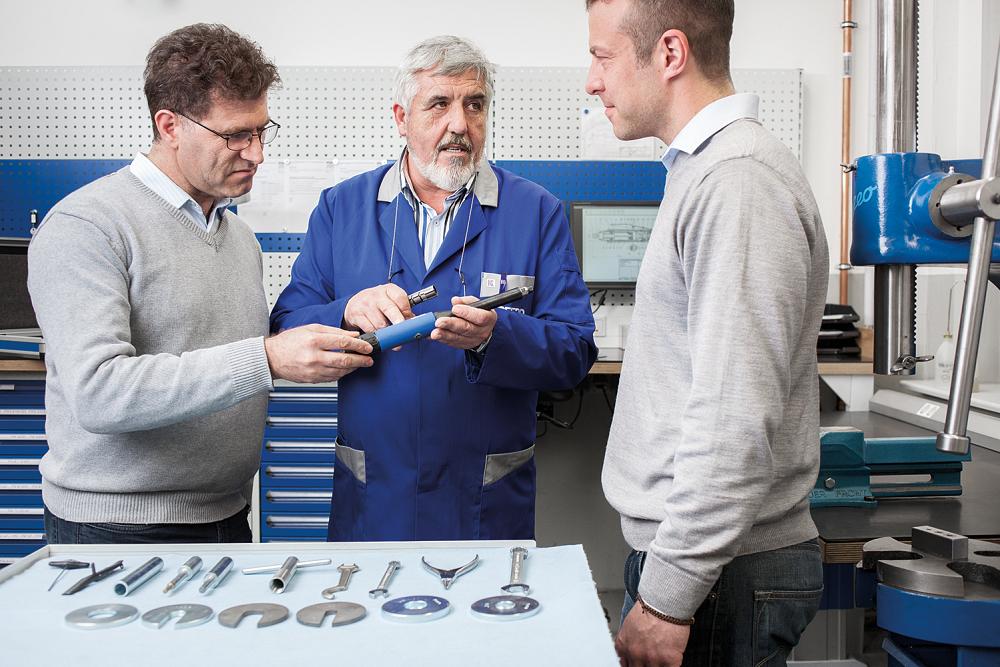
Light maintenance and cleaning can be done in-house. If a repair is needed, a CSA- or UL-authorized service centre is recommended by most manufacturers. Photo courtesy of PFERD Inc.
A little effort put into maintaining hand power tools, whether air or electric, can pay off in better and safer performance and longer tool life even when working in challenging conditions like foundries, casting plants, and metal fabrication shops.
When hand tools are used according to manufacturer’s recommendations, maintenance can be minimal. For air tools, it may be as simple as adding a drop or two of oil before each use and being sure that the air used is dry.
For electric tools, which are dependent on the ambient air in which dust particles from a grinding, finishing, or drilling process can be collected, a blast of compressed air directed at the inlet and outlet for a few seconds can dislodge trapped particulates.
Beyond the daily care, Lucas Bryk, global product marketing manager for Chicago Pneumatic Tools, and John Thompson, national technical sales training manager for PFERD Inc., offered some suggestions on how to show power tools a little respect.
1. Know and follow manufacturer guidelines.
Bryk: To get the level of durability and reliability expected from tools, follow maintenance recommendations. For example, we recommend a motor vane inspection every 500 hours, a bevel gear lubrication every 1,000 hours, and bevel gear replacement every 2,000 hours of trigger time to keep the original performance of industrial angle grinders.
Thompson: It is a best practice to keep the original owners’ manuals easily accessible, and be sure that operators know and follow specific maintenance schedules and storage recommendations. If a manual is lost or misplaced, most manufacturers have the information available on their websites.
2. When power tools are not in use, store them in a dry, clean environment.
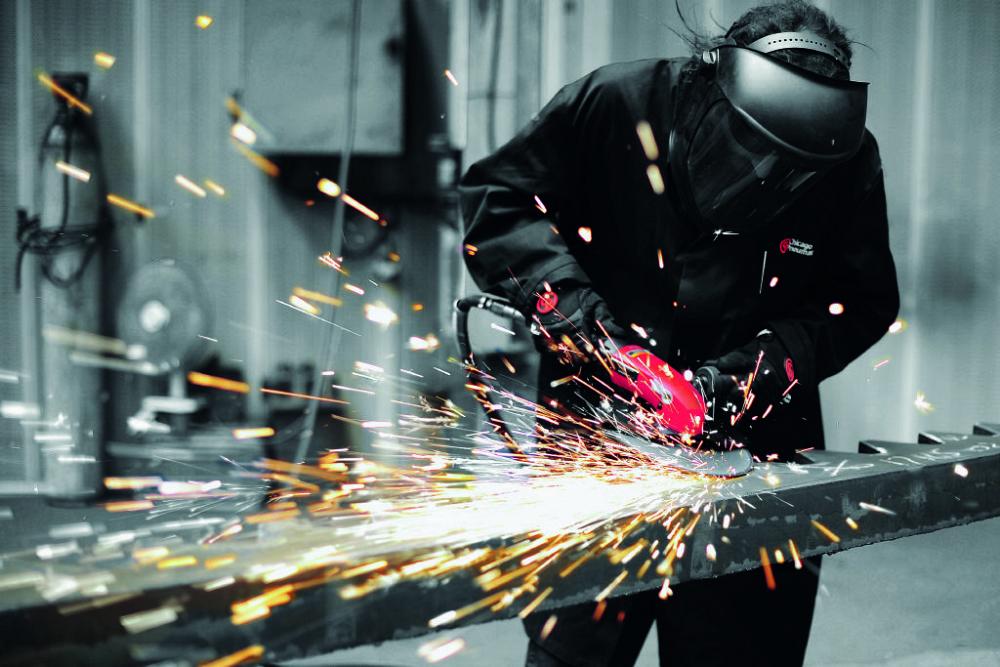
Daily and regularly scheduled maintenance will avoid production downtime caused by to tool failure. Photo courtesy of Chicago Pneumatic Tools USA.
Bryk: Store tools in proper cradles or cabinets rather than leaving them on a workstation. This will prevent moisture and particles from entering an air tool through the exhaust once it has been disconnected from the air network. A common practice is to add a couple drops of air tool oil to the tool and run it for a few seconds before storing it. This provides a thin layer of lubricant and protects the tool from corrosion when it is stored for longer periods of time.
Thompson: Mixing moisture with power tools can cause safety issues, but beyond that, it also causes corrosion on electrical contact parts and internal air vanes of air tools. Avoid storing any power tool in a humid environment.
3. Use the tool only for its intended purpose.
Bryk: Using a tool only for its designed purpose is a way to avoid mishandling and preserve it from deterioration. An example of misuse would be using brushes or heavy accessories in die grinder collets instead of traditional abrasives such as carbide burrs, mounted points, or flap wheels. This can deteriorate the collet holder and spindle, creating undesirable runout and vibration, and can add the risk of the consumable detaching from the holder and putting the operator in danger.
Thompson: Safety and performance are best served by using the correct tool and consumable for an application. For example, an electric drill motor is designed for use with drill bits. It will not provide the correct speed or torque for mounted points or carbide burrs. The extreme slow speed and lateral load will wear out the tool and the consumable and result in overall poor performance. A common thing we see is people using the end of the roller assembly on mini belt-type files as the contact area when these tools are designed for use on the flat area. Excessive pressure on the tool front nose often distorts the front casting and can wear out the bearings.
On the consumable side, we’ve seen metal saw blades used in power mitre saws designed for wood. The wood saws run at an improper speed for a metal cutting saw blade. The metal blade will wear out very fast, and the hot metal chips will melt the plastic parts on the saw. A lot of performance issues and maintenance on tools are caused by using a tool for an application it wasn’t designed for.
4. Do not alter the tools.
Bryk: For pneumatic tools, follow manufacturer recommendations related to air inlet, internal air hose diameter, and quick-coupler dimensions to ensure sufficient airflow. If a tool is run with the correct air line accessories, for instance a 12,000 RPM angle 5-in. grinder or a 900-RPM pistol drill, its grinding speed will be as specified by the manufacturer. Narrower hoses or couplers will limit the air flow, and the tool will not perform as expected. Preservation of air tools is also ensured by maintaining proper airflow, air filtration, and lubrication, ensured by a filter regulator lubricator.
Some operators have a habit of removing the safety guard from angle grinders to allow for greater maneuverability. This exposes the operator to abrasive particles that can be harmful in the case of a wheel burst. Keyless adjustable guards allow the guard to be changed easily and left in place when an application requires a different position. This will protect both the operator and the equipment from flying particles.
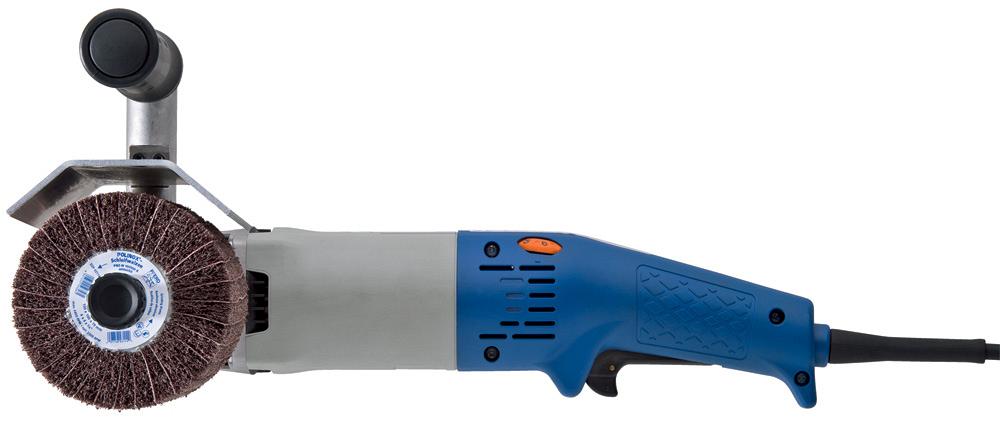
Attach and use peripheral accessories such as a second hand grip to get the best performance from a tool. Photo courtesy of PFERD Inc.
Thompson: Keep peripherals in place. For example, if the manufacturer has supplied a secondary grip but it is not used, it can create issues for safety and tool performance. Or if a foot guard is removed from a reciprocating saw, the reciprocating arm can hit the material and fracture parts inside of the tool. You also need a sufficient power supply to avoid performance issues. You can underpower a tool by starving it of electrical power caused by an underrated wire size for the amperage needed.
Any modification by a fabricator must result in additional testing of the tool if it is to maintain CSA or UL certification.
5. Use original spare parts and authorized repair centres.
Bryk: Accessories subject to wear, such as safety screws; front flanges that maintain the abrasive wheels on an angle grinder spindle; safety guards; and safety levers should be kept in good condition and replaced as needed with spare parts from the manufacturer for optimal safety. Some companies offer tune-up kits that contain a full set of replacement parts.
Thompson: A lot of people want to know if they can repair the tools themselves. Light maintenance and cleaning are fine, but you really want to send a tool to an authorized centre if a repair is needed. Usually, to maintain a CSA or UL certification, and most manufacturers advocate very strongly to use tools approved by these outside testing labs, tools need to be repaired by an authorized centre. The authorized centres themselves have to meet certain standards, and repaired tools are fully tested to make sure they are accurate and regulation-compliant.
Additional Thoughts
Bryk: Improper or insufficient maintenance might lead to deterioration of the tool to the point where repair is needed to more than just the wear parts. But more than that, is that work may be stopped due to a faulty tool. When maintenance is planned and executed at a time when it does not affect work flow, productivity can remain constant.
Thompson: The best part about maintaining power hand-tools is that it doesn’t have to be complicated when handled properly on a day-by-day basic. Maintenance is mostly based on using common sense. If a power tool is needed to make your daily bread, why wouldn’t you treat it well?
Associate Editor Sue Roberts can be reached at sroberts@canadianfabweld.com.
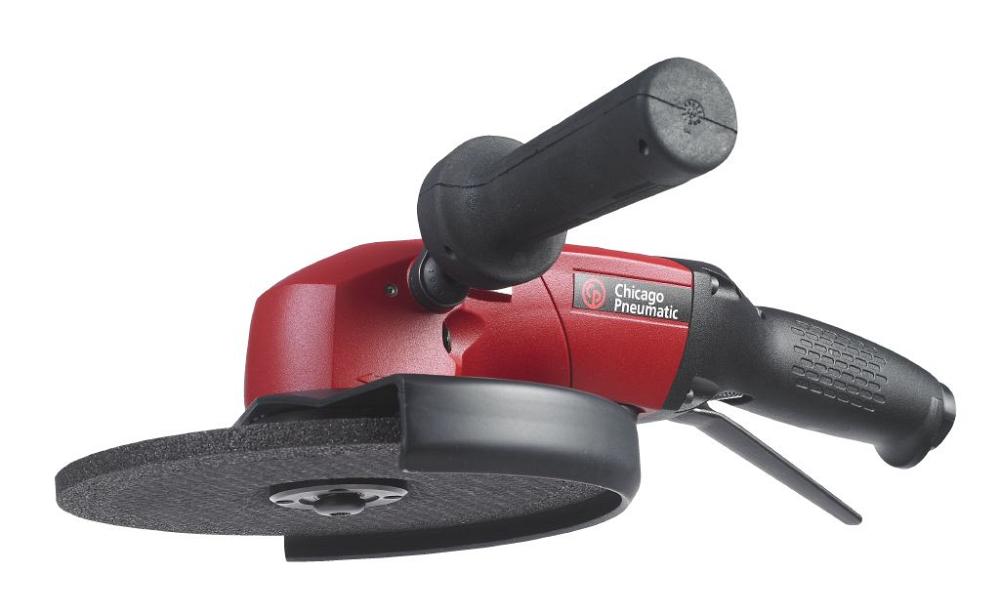
Leave all guards in place to protect the operator and the tool. Photo courtesy of Chicago Pneumatic Tools USA.
Chicago Pneumatic Tools USA, 800-624-4735, www.cp.com/tools-service-desk
PFERD Inc., 262-443-4571, www.pferdusa.com
subscribe now


Keep up to date with the latest news, events, and technology for all things metal from our pair of monthly magazines written specifically for Canadian manufacturers!
Start Your Free SubscriptionAbout the Author

Sue Roberts
2135 Point Blvd
Elgin, IL 60123
815-227-8241
Sue Roberts, associate editor, contributes to both Canadian Metalworking and Canadian Fabricating & Welding. A metalworking industry veteran, she has contributed to marketing communications efforts and written B2B articles for the metal forming and fabricating, agriculture, food, financial, and regional tourism industries.
Roberts is a Northern Illinois University journalism graduate.
- Trending Articles
Class is in session for college connections
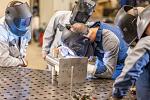
BlueForge Alliance partners with Nuts, Bolts & Thingamajigs to develop Submarine Manufacturing Camps

Portable system becomes hot tech in heat treatment

Orbital tube welding webinar to be held April 23

Cidan Machinery Metal Expo 2024 to be held in Georgia May 1-2

- Industry Events
MME Winnipeg
- April 30, 2024
- Winnipeg, ON Canada
CTMA Economic Uncertainty: Helping You Navigate Windsor Seminar
- April 30, 2024
- Windsor, ON Canada
CTMA Economic Uncertainty: Helping You Navigate Kitchener Seminar
- May 2, 2024
- Kitchener, ON Canada
Automate 2024
- May 6 - 9, 2024
- Chicago, IL
ANCA Open House
- May 7 - 8, 2024
- Wixom, MI















